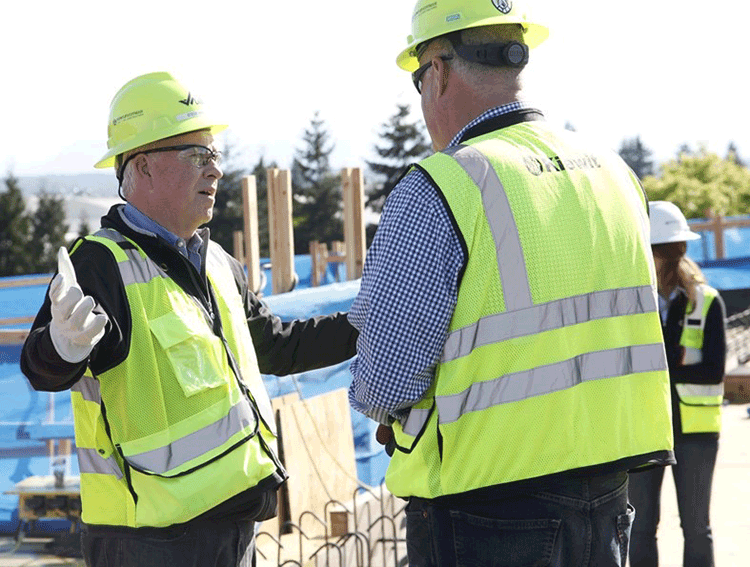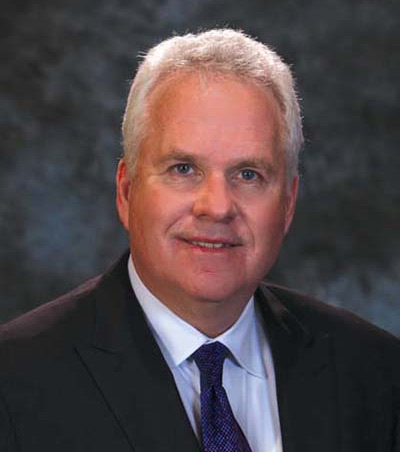2021 CEOs Who 'Get It'

Stephen Sandherr
CEO
The Associated General Contractors of America
Arlington, VA

The Associated General Contractors of America is the trade association for the commercial construction industry in the United States. Its mission is to ensure the continued success of the construction industry by advocating for federal, state and local measures that support the industry; providing opportunities for firms to learn about ways to become more accomplished; and connecting them with the resources and individuals they need to be successful business and corporate citizens. More than 27,000 firms are members of AGC.
Describe your personal journey to becoming a CEO who “gets it.”

First off, it is important to note that the Associated General Contractors of America is the trade association that represents the commercial construction industry within the United States. As a result, when we talk about our commitment to safety, we are talking about much more than making sure our several dozen office employees have a safe and healthy work environment.
What we are really talking about is our commitment to providing the kind of resources, instruction, information and encouragement to improve the health and safety of the construction workforce in this county.
Since our inception in 1918, our association has always placed a high value on safety in the construction industry. Since before I become CEO in the 1990s, AGC has offered construction safety programming and operated its annual Construction Safety Excellence Awards, which highlights firms’ successful construction practices and encourages other members to follow suit.
As CEO, I have consistently worked to support and expand our safety offerings. One of the biggest turning points for me, however, came several years ago when we commissioned a team of researchers to review every construction fatality over a three-year period. Its final report offered a new level of detail about the causes of construction fatalities. Its underlying message was clear: Construction fatalities can be prevented.
The release of that report in 2017 inspired us to redouble our efforts when it came to construction safety. We issued guidance to member firms based on the study’s findings to help improve workplace safety. This included encouraging them to hold safety talks midday, when most construction fatalities occur; to pay close attention to work taking place midweek; and to be extra vigilant about drug and alcohol consumption on or near jobsites. We also made a conscious decision to make all our safety resources available – free of charge – to anyone, regardless of membership. There is nothing proprietary about safety.
We partnered with National Construction Safety Week to begin urging all our member firms to participate in the annual effort to stop construction work and hold what are called safety stand-downs – on jobsite safety programs designed to highlight specific risk areas and safety practices. We also partnered with several of our state chapters to organize statewide safety stand-downs designed to educate construction workers about the dangers of opioid abuse, how to identify individuals who are at risk and how to prevent it.
But the biggest catalyst came once the COVID-19 pandemic began to threaten the health and safety of the industry. The coronavirus presented a unique challenge for our industry. We didn’t just need to focus on protecting workers, but also had to make certain the construction sector was doing its part to protect communities from the spread of the virus. Within days, we organized safety webinars to provide firms (members and non-members alike) with safety resources and advice on how to protect workers from the virus.
We made resources available online and we organized a nationwide safety stand-down in early April to make sure firms were enforcing all coronavirus-safety-related precautions. Thousands of firms participated in the stand-down. As a result, our industry has largely avoided the kind of widespread coronavirus outbreaks that have crippled so many other sectors of the economy. This allowed construction to continue operating as an essential part of the economy in many parts of the country.
What is the biggest obstacle to safety at your organization, and how do you work to overcome it?
There are several big obstacles to safety in the construction industry. The first is simply the sheer size and number of firms involved in the industry. Ours is not like the airlines or auto manufacturing sectors that are dominated by a handful of large firms. Our association alone counts over 27,000 firms as members, and each has a unique safety culture and program. While this diversity makes our industry more agile and competitive, it presents a challenge when it comes to safety training and education.
The other challenge is simply the nature of construction work. In most other industries, workers operate in environments that rarely change and perform similar tasks day in and day out. But construction workers not only perform a wide range of different tasks, but their jobsite changes, sometimes by the hour.
Why is safety a core value at your organization?
Construction is an inherently risky activity. Few other careers require professionals to work so closely with moving equipment on jobsites that change every day. Many crews work at elevated height or within underground excavation sites. And our highway crews often work within feet of fast-moving traffic. As the trade association for the commercial construction industry, we feel a special sense of obligation to do everything within our power to help our members protect their most valuable assets: construction craft professionals. Nobody should have to risk their lives just to earn a living. And we want to make sure every construction worker goes home, safely, at the end of every workday.
How do you instill a sense of safety in employees on an ongoing basis?
The simple answer is repetition and talk to as many people as possible. We are constantly providing safety education programs and resources for our members. We like to say that you can’t talk about safety enough. And we have regular communications that go out to members in a variety of roles. Everyone at a construction firm is responsible for safety, not just the safety directors, so we try to reach everyone as much as possible to make sure they have the tools they need to protect and empower their workers. I have also written directly to the CEOs of our major firms, especially since the coronavirus, to encourage them to make sure their firms are taking every possible step to protect workers and local communities from the coronavirus.
How does your organization measure safety? What are the leading indicators that show you how safe your organization is, and where do you see room for improvement?
We closely monitor and track the Bureau of Labor Statistics data on construction workplace fatality totals and rates, as well as comparable data on construction workplace injury totals and rates. We also conduct annual surveys on highway work zone safety, how labor shortages are impacting construction safety, and, more recently, how the coronavirus is impacting the health and safety of the construction workforce. We closely track all these datasets and use them to inform our safety programming and the types of resources and messages we send to our member firms.
What role does off-the-job safety play in your organization’s overall safety program? What types of off-the-job safety and health programs does your organization offer to employees?
We do feel strongly that safety does not start or stop at the construction jobsites. That is why we have created and promoted programs that focus on worker health outside of the jobsite. This includes creating programs to address substance abuse, suicide prevention and opioid addiction. In addition, we have also worked with our chapters, particularly in warmer parts of the country, to promote at-home hydration so workers show up on jobsites ready to handle the heat safely.
What have you done to support employee mental health and well-being within your organization?
One of our new initiatives this year is the release of our “Culture of Care” program. This program is designed to help construction firms create welcoming jobsites so they can successfully retain a more diverse workforce. But it also places a special emphasis on supporting the mental health and well-being of construction workers. Indeed, we accelerated the release of this program once the pandemic hit, in fact, to make sure that firms had the resources they need to ensure workers’ mental health needs were being address.
Post a comment to this article
Safety+Health welcomes comments that promote respectful dialogue. Please stay on topic. Comments that contain personal attacks, profanity or abusive language – or those aggressively promoting products or services – will be removed. We reserve the right to determine which comments violate our comment policy. (Anonymous comments are welcome; merely skip the “name” field in the comment box. An email address is required but will not be included with your comment.)


